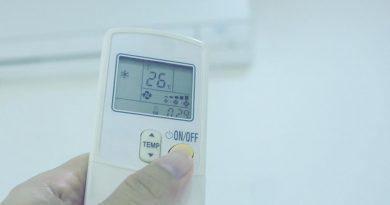What is Premenstrual Syndrome?
Premenstrual syndrome (PMS) is a wide range of symptoms and discomforts that a woman may suffer around 5 to 10 days prior to her monthly menstrual cycle.
The symptoms usually resolve once the menstruation begins or in a day or two. PMS affects nearly 75% of women during their childbearing years. (1-7)
Causes of Premenstrual Syndrome (PMS)
The exact cause for this condition is unclear, although there are multiple theories and studies.
While some authorities believe changes in brain hormones to be responsible others believe certain foods may trigger PMS.
In addition, the symptoms of PMS vary among women and no two women are similar in this aspect. Cultural history, psychological and biological make up differences may be responsible for these varied manifestations of this condition.
Who does Premenstrual syndrome (PMS) affect?
PMS is commonly seen in women between their late 20s and early 40s with at least one child and with a family history of depressive illnesses. Symptoms worsen progressively as the woman enters her forties and is nearing menopause.
Women who have had an episode of depression after childbirth (postpartum depression) or those with a mood disorder may be at a higher risk of PMS.
Women with PMS are also at risk of having a psychiatric disorder called premenstrual dysphoric disorder (PMDD). At least 50% – 60% of women who have severe PMS may also have concomitant PMDD.
Diagnosis of Premenstrual Syndrome (PMS)
Women with PMS are asked to keep a daily diary of symptoms and their intensity and duration. This should be maintained for at least 3 months for diagnosis and treatment.
Symptoms of Premenstrual Syndrome (PMS)
The symptoms usually begin during the second half of the menstrual cycle – that is 14 days after the first day of the last menstrual period.
The symptoms are relieved by themselves at the beginning of the next period or 4 – 7 days after a menstrual period ends which falls in the first half of the menstrual cycle. The symptoms are physical, behavioral, or emotional.
Physical symptoms include bloating of the abdomen, breast pain and tenderness, bowel upset with constipation or diarrhea, headaches and increased sensitivity to light and noise and food cravings.
There may be confusion, memory loss, irritability, mood swings, poor judgement capacity, difficulty in concentration, tiredness, unexplained sadness, anxiety and apprehension along with poor or altered self-image, guilt etc.
There is a loss or abnormal sex drive, sleep problems like sleeping too much or too little and slowing or lethargy of movements. Some women manifest with skin symptoms like acne, oily skin, greasy or dry hair.
Those with a more severe condition like PMDD may find that their symptoms are severe enough to prevent their normal daily living.
Treatment for Premenstrual Syndrome (PMS)
As of now there are no sure-fire cures for PMS. Treatment usually revolves around managing the symptoms to reduce discomfort.
There are medications, hormone or psychological treatments available for PMS therapy. Medications include antidepressants like Selective serotonin reuptake inhibitors (SSRIs) that may be beneficial in some women.
Women with PMS are advised to eat a healthy diet with low salt, fat and caffeine and high fibers, getting regular exercise and reducing stress. PMS is automatically “cured” as a woman reaches menopause.
Sources
- http://www.ncbi.nlm.nih.gov/pubmedhealth/PMH0002474/
- www.nhs.uk/conditions/premenstrual-syndrome/Pages/Introduction.aspx
- www.bbc.co.uk/…/premenstrual_syndrome.shtml
- http://www.csun.edu/shc/pdfs/education/pms.pdf
- womenshealth.gov/…/premenstrual-syndrome.pdf
- http://acudoc.com/Premenstrual_Syndrome.PDF
- http://www.patient.co.uk/doctor/The-Premenstrual-Syndrome.htm
Further Reading
- All Premenstrual Syndrome Content
- Causes of Premenstrual Syndrome (PMS)
- Symptoms of Premenstrual Syndrome (PMS)
- Treatment of Premenstrual Syndrome (PMS)
- Premenstrual Syndrome (PMS) and Premenstrual Dysphoric Disorder (PMDD)
Last Updated: May 14, 2019

Written by
Dr. Ananya Mandal
Dr. Ananya Mandal is a doctor by profession, lecturer by vocation and a medical writer by passion. She specialized in Clinical Pharmacology after her bachelor's (MBBS). For her, health communication is not just writing complicated reviews for professionals but making medical knowledge understandable and available to the general public as well.
Source: Read Full Article



